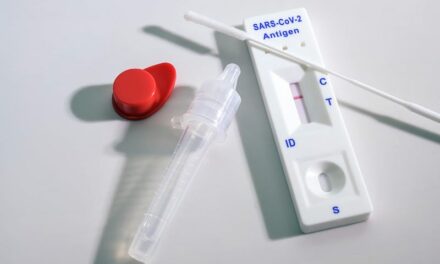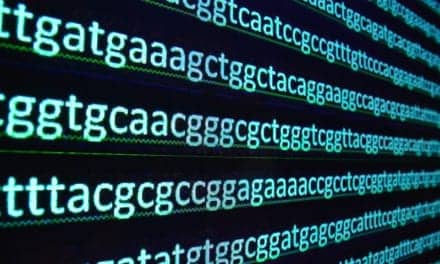The S-Gene dropout is a critical means for helping clinicians identify variants in SARS-CoV-2, and gives a window in how other variants and other viruses will be identified and tracked in the future.
By Manoj Gandhi
Viruses need to replicate, and that process can often lead to mistakes in mirroring their own genetic material or mutations. Many of these mutations have no impact on how the virus behaves, but some become a means of continuing their survival. Some virus types, like RNA viruses, which include those that cause the seasonal flu, COVID-19, and more, mutate much faster than others.[1],[2]
These mutations can quickly alter the course of a disease. Different strains of the flu consistently emerge each year which causes a shift in which vaccine is effective. Similarly, changes in the makeup of SARS-CoV-2 have resulted in several recurring waves throughout the past two years.[3] In a situation that is as pervasive as COVID-19, any shifts in characteristics of the virus could have incredibly wide-ranging effects on many lives.
Types of mutations
There are three key types of mutations that can occur; substitution, insertion, and deletion, each having their own impact on viruses and how they evolve.
Substitution changes the existing base pairs of the nucleotide sequence with different base pairs that change the amino acid composition of the protein.[4] Additionally, substitutions can be one of silent, missense, or nonsense mutations. Silent mutations are single nucleotide changes that do not affect the amino acid sequence of the protein; missense mutations change the amino acid coded by that codon; while nonsense mutations cause a transformation that changes a codon into a stop codon, ending translations prematurely.
Insertions are caused by the addition of one or more nucleotides into the sequence.[5] This can be either small insertion or large insertions. In small insertions, a single base pair is added that can cause a frameshift mutation changing the entire codon sequence, while larger ones can insert an entire fragment of a chromosome. If a stop codon is inserted, it leads to a premature end to translation resulting in a non-functional short protein, similar to stop codons in nonsense mutations.
Lastly, deletions occur when nucleotides or sequences are completely removed from a strand.[6] Like insertions, deletions can range from single nucleotides to entire fragments of DNA or RNA, with single deletions shifting the gene while larger ones completely changing how a gene is coded, producing different amino acids.
These types of genetic variations can either have no effect, or largely alter the genetic makeup of a virus, significantly impacting its behavior and its ability to cause disease. Virus strains that harbor mutations that result in increases in transmissibility, or severe disease or virulence, or cause a decrease in effectiveness of therapeutics, vaccines, and tests have been categorized by the World Health Organization as variants of interest (VOI), or variants of concern (VOC), or variants of high consequence (VOHC).[7]
The S-Gene Dropout Story
Any number of genes on the virus can be used by researchers when developing vaccines, tests, and therapeutics. They typically aim for genes that are unique to the virus. In case of SARS-CoV-2, one such target is the S-gene that codes for the spike protein, which is the signature of the virus.
Alterations in the S-gene, particularly deletions, have played a huge role in the current pandemic. Most notable is the 69-70del mutation, a 6-nucleotide deletion in the S-gene. In November 2020, the Thermo Fisher TaqPath COVID-19 test designed using the S-gene which happened to have the deletion, started showing a pattern in which the S-gene did not to amplify. However, due to built-in redundancies in the test design targeting two additional SARS-CoV-2 genes, the test was still able to provide positive results in COVID-19 patients, just without the S-gene showing.
This unique pattern called the S-gene dropout or S-Gene Target Failure (SGTF), indicated that a new strain of the virus may have emerged. This was later confirmed by sequencing the virus genome and this strain was called the Alpha variant. Unfortunately, the mutations in this variant had made the virus more transmissible with the ability to cause severe disease. By looking at the S-gene Dropout signal, clinicians and public health officials were able to suspect with some degree of certainty that they were dealing with the Alpha variant and were able to prepare to take moves to fight back against it.
Conversely, when the Delta strain which did not harbor 69-70del emerged, the S-gene dropout signal was reversed. The TaqPath COVID-19 test returned to its original pattern for positive results and this was referred to as S-Gene Target Positive (SGTP). The transition of SGTF to SGTP on the TaqPath COVID-19 test now became a useful tool to track the spread of the Delta variant. The Delta variant eventually went on to become the dominant variant and completely replaced the Alpha variant. Later in the pandemic, in the background of Delta showing SGTP, the same 69-70del mutation resulted in the second coming of the S-gene dropout which helped discover the first Omicron variant.[8]
Omicron is highly transmissible, significantly more than Delta, and the reappearance of S-gene dropout on the background of SGTP was valuable to track the spread of BA.1. Since the original BA.1 Omicron variant, there have been several Omicron sub-lineages that have been circulating, each becoming the dominant strain with the potential to subvert vaccines and cause severe illness.[9] This has been accompanied by the alternating pattern of S-gene dropout followed by SGTP with the different Omicron sub-lineages.
The S-gene dropout has turned out to be invaluable for clinicians and scientists in finding quick answers regarding the strain of the virus rather than taking longer to sequence these samples. Detection of Alpha and Omicron, both of which have been classified as Variants of Concern, was made possible largely in part due to the results produced featuring the S-gene dropout on the TaqPath COVID-19 test. It is still not entirely clear what effect the S-gene dropout specifically has on the virus, whether it eludes vaccines or makes therapeutics less effective or disrupts any specific tests; but this alternating pattern of either having or not having the S-gene dropout has become a very useful way to keep track of the SARS-CoV-2 variants as they develop and has become one of the most fascinating stories in molecular diagnostics in recent times.
Learning from the S-Gene Dropout Mutation
As we try living safely alongside the SARS-CoV-2 virus, the public needs to understand what role testing plays in managing the spread and ensuring that the damage caused by COVID-19 is minimized. First and foremost, continued access to regular testing should remain a main priority. Tests need to be made easily accessible when there are outbreaks and spikes in case activity. As seen with the dramatic increase in number of cases with Omicron and Delta, traditional COVID-19 testing remains the first line of defense in dealing with the virus.
Secondly, it is imperative to optimally use all available tools to track current and new mutations, to react not only when there are spikes but also in between the spikes to anticipate future developments. This ranges from utilizing mutation assays to see what known variants are prevalent to using sequencing to identify any new variants that are starting to make their way through the population.
The pandemic has many different facets, and our testing response needs to be just as multifaceted. Observing the S-Gene dropout in routine COVID-19 testing helped to detect Alpha and Omicron during their initial outbreaks. Keeping an eye out for other dropouts in these tests is a great way to make sure that we stay as ahead as possible on developing mutations. Each mutation could potentially mean diminished protection from existing vaccines or therapeutics, and the people working on developing those need to utilize all the tools at their disposal to account for the changes.
Antigen tests have gained a lot of traction, especially when it comes to at-home testing. However, this is where PCR testing plays a special role, providing additional critical information to clinicians and public health officials that may not be offered by antigen tests. Both, PCR and antigen tests are an important piece of the larger puzzle in pandemic management. Exclusively using one methodology leaves us vulnerable to being caught off guard by new SARS-CoV-2 strains which could wreak havoc across the globe. Manufacturers have an obligation to keep up production of both types of tests, while communicators need to efficiently explain the role that each have. Both these tasks have become more important yet more difficult as many people have become complacent with the virus leaving them potentially less willing to get tested or listen to new information.
SARS-CoV-2 is going to continue to mutate as time goes on. The reality is that the virus is here to stay and that we have just shifted from one phase into another in this ongoing battle. The S-gene dropout is just one of the examples of how we need to be using every tool at our disposal to stay as many steps ahead of COVID-19 as we can.
ABOUT THE AUTHOR
Manoj Gandhi, MD, PhD, is the senior medical director for the genetic testing solutions business at Thermo Fisher Scientific, and is part of the team that provides medical strategy, medical and scientific oversight for product development, on-market product support, and customer engagement.
REFERENCES
[1] https://pubmed.ncbi.nlm.nih.gov/27392606/#:~:text=RNA%20viruses%20mutate%20faster%20than,correlate%20negatively%20with%20mutation%20rate.
[2] https://www.ncbi.nlm.nih.gov/pmc/articles/PMC6107253/
[3] https://www.uabmedicine.org/-/flu-strains-explained-and-how-the-vaccine-works
[4] https://www.genome.gov/genetics-glossary/Substitution
[5] https://www.genome.gov/genetics-glossary/Insertion
[6] https://www.genome.gov/genetics-glossary/Deletion
[7] https://www.who.int/activities/tracking-SARS-CoV-2-variants
[8] https://www.ncbi.nlm.nih.gov/pmc/articles/PMC9039052/
[9] https://health.ucdavis.edu/coronavirus/covid-19-information/omicron-variant#:~:text=The%20omicron%20subvariant%20of%20COVID,from%20COVID%20infection%20and%20vaccination.





